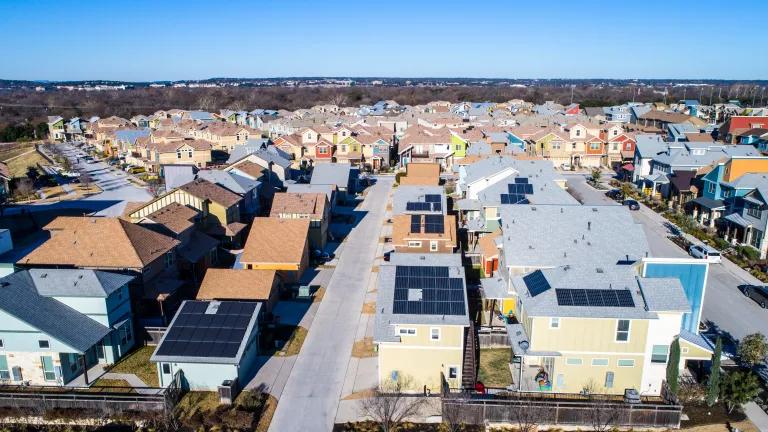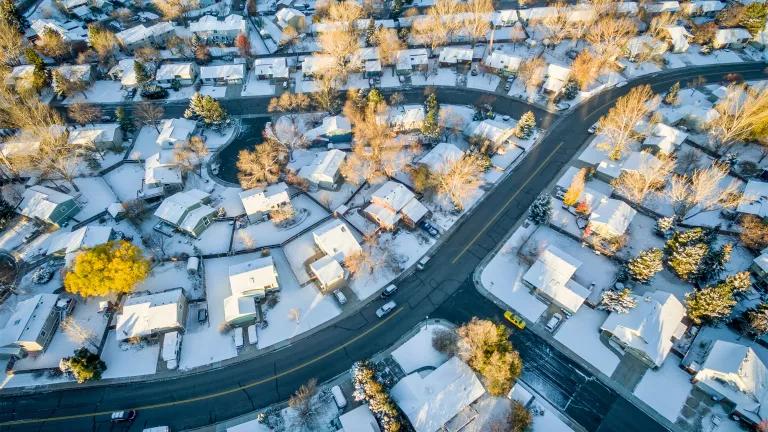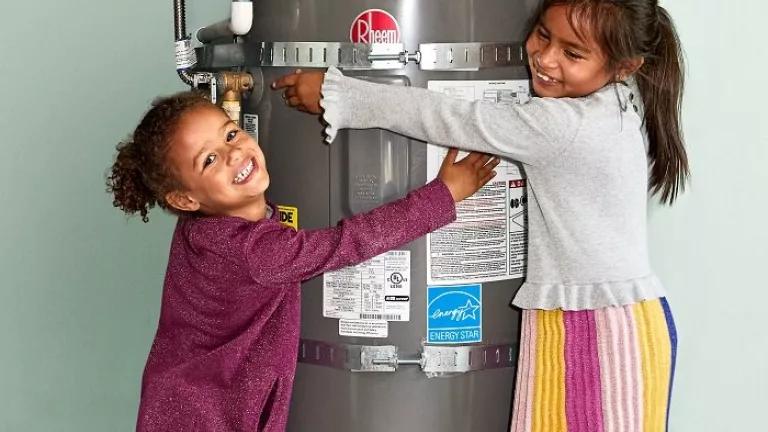The IRA Turns One: An Update on Buildings-Related Programs
The past year has been a busy one as federal agencies have begun the early stages of rolling out Inflation Reduction Act funds.

As we reach the one-year anniversary of passage of the Inflation Reduction Act, it’s a good time to reflect on the progress that’s been made toward implementing this historic investment to combat climate change and transform our nation’s buildings—and the work that is yet to come.
Tax Incentives
Starting January 1, 2023, homeowners and businesses can access tax credits for various efficiency and decarbonization building upgrades. While rebates offset the purchase price of efficiency products, tax credits take a different approach, by returning the funds when a homeowner or business files their federal taxes. The good news is, these tax incentives are available now, and while there is a maximum dollar amount a building owner can receive per year, there is no lifetime cap and no overall cap on the amount of incentive the government will provide. Credits are available through the end of 2032.
The homeowner efficiency tax credits cover 30 percent of the cost of certain energy upgrades, up to a total of $1,200 each year. If a homeowner installs a heat pump or heat pump water heater, that limit increases to $2,000. Previous iterations of this tax credit were per lifetime, whereas this credit is per year—meaning a homeowner could upgrade their windows one year, install a heat pump the next year, and install insulation the next year, and claim the tax credit each year. Eligible upgrades to promote decarbonized buildings include the following equipment, with specific energy efficiency requirements for each:
- Heat pumps for home heating and cooling, including air-source and geothermal
- Heat pump water heaters
- Central air conditioners
- Biomass stoves and boilers
- Home energy audits
- Air sealing and insulation
There is a tax credit for new homes, which is provided directly to the builder for constructing homes that meet the most recent ENERGY STAR specifications. This credit should make these high-efficient homes more readily available for consumers to purchase. In addition, there are tax credits for commercial building owners to increase efficiency of both new and existing buildings.
For each of these tax credits, we are waiting on additional guidance from the Department of Treasury to ensure that they are as clear, useable, and effective as possible. In addition, there is much work to be done by contractors, retailers, and builders to raise consumer awareness. Even so, the credits are available for purchases made now, and could make a big difference on the year’s tax bill.
Consumer Rebates
Homeowners will have access to sizeable rebates to offset the cost of energy efficiency and electrification upgrades in their homes – but these rebates are not yet available. The Department of Energy (DOE) has gathered information from interested stakeholders about how the program should be designed to be the most successful, particularly when it comes to serving low- and moderate-income homeowners. DOE recently issued program guidance and funding announcements for the nearly $9 billion in funds, which will be administered directly through state energy offices.
Greenhouse Gas Reduction Fund
The Environmental Protection Agency (EPA) recently opened the application processes for the $27 billion Greenhouse Gas Reduction Fund (GGRF), which will provide critical financing mechanisms for clean energy and decarbonization technologies and projects. The fund is divided into three programs:
- The $7 billion Solar for All program will be awarded to solar programs across the country that benefit low income and disadvantaged communities. Funds can also be used for corresponding energy efficiency upgrades.
- The $14 billion National Clean Investment Fund will make 2-3 large awards to national nonprofits to provide financing to businesses, community finance organizations and lenders, and others to support thousands upon thousands of individual projects that decarbonize buildings, transportation, and power generation. At least 40 percent of funds will benefit low income and disadvantaged communities.
- The $6 billion Clean Communities Investment Accelerator will make 2-7 awards to “nonprofit hubs” to expand the reach of community lenders that can rapidly deploy funds in underserved markets. This tranche of funding is dedicated exclusively to low income and disadvantaged communities.
The GGRF has the potential to transform the financing arena for clean and green technologies – and we expect many of the resulting projects will include improvements to buildings.
Improved Energy Codes
There are two tranches of funding available—or soon to be available—for jurisdictions to improve the codes that govern the energy use of newly constructed buildings. The first $90 million in codes-related funding from the Infrastructure Investment and Jobs Act (IIJA) was recently awarded for 27 projects across 26 states, all of which will support the efficiency and decarbonization of new construction. The Inflation Reduction Act has an additional $1 billion tagged to support jurisdictions adopting of the most recent energy codes—or better—but this funding is not yet available. We expect a funding announcement in the fall.
Green and Resilient Retrofit Program
The Department of Housing and Urban Development (HUD) is administering this program, which is one of the few in the Inflation Reduction Act that specifically targets improvements to affordable housing. HUD-assisted properties are eligible for grants and loans for upgrades related to energy efficiency, emissions reduction, clean energy generation, health and safety, and climate resilience. Review periods for applications are open now, with multiple future opportunities for applications.
Climate Pollution Reduction Grants
This program, administered by the Environmental Protection Agency, provides funding for both states and the largest metro areas to make robust, community-informed plans for tackling climate change. In the first phase, jurisdictions will use their funding to develop their plans. Once plans are approved by EPA, this “unlocks” jurisdictions’ access to EPA’s $4.5 billion fund for grants that may exceed $100 million, for projects supporting those plans. States and cities have already had to announce their intent to participate, with Florida, Iowa, Kentucky, and South Dakota declining to participate. Any funds that were declined were reallocated to metro areas in those states.
The past year has been a busy one as federal agencies have gathered input on program design and begun rolling out Inflation Reduction Act funds—but we are truly at the early stages. Next up, cities, states, communities, and other organizations have the significant task of applying for and implementing funds, which will be critical to success. This is an incredible and exciting opportunity to equitably improve our nation’s buildings.



